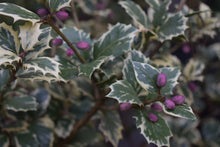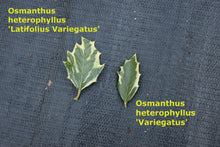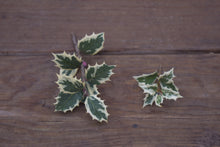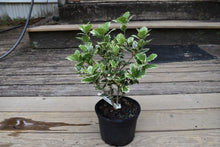Osmanthus heterophyllus 'Latifolius Variegatus'
Regular price
$45.00
Sale
When Todd Lasseigne (presently director of Bellingrath Gardens) was visiting Hillier's Arboretum in England in 2002, he came across this plant which was not in very good condition in the garden. Most of us had never heard of a variegated Fortune Tea Olive, but here one was labelled. After getting permission to take a few cuttings, Todd sent me several of them. He kept some of them to stick at North Carolina State University, and I tried grafting the ones he sent me. A couple of my grafts took and from these grafts I sent one back to The J.C. Raulston Arboretum, but it was lost. It is quite stunning with a variegation almost identical to Osmanthus heterophyllus 'Variegatus', but with leaves only slightly larger. Todd put on Facebook: "Thank you, Ted Stephens, for sending me this gift plant, Osmanthus x fortunei '(Hillier's) Variegatus', which I had collected (with permission) from the Sir Harold Hillier Gardens and Arboretum as winter cuttings way back in 2002 when I worked at the JC Raulston Arboretum. Mike Buffin, then curator of the Hillier Arboretum, had shown me the not-so-happy plant growing there, and offered me to take a few cuttings. (This plant, I suspect, prefers a climate with warmer summers than the U.K. normally produces.) Folks, without Ted's proficiency as a grafter, this plant would likely not have been successfully propagated after its trans-Atlantic voyage. It is distinct from O. heterophyllus 'Variegatus' and other O. h. cultivars and also from any of the variegated clones of O. fragrans. A superb introduction to the U.S., the first to my knowledge of a great southern U.S. plant, but with exquisite variegated foliage!" But after further exploration, we found in THE HILLIER MANUAL OF TREES AND SHRUBS that this is most likely not Osmanthus x fortunei, but rather another variegated form of Osmanthus heterophyllus. The leaf of this cultivar is probably 40-50% larger than O. heterophyllus 'Variegatus'. So it is a distinct cultivar which they have designated as Osmanthus heterophyllus 'Latifolius Variegatus'. Another interesting aspect of this introduction is that it is a female plant and will produce pink fruit with a male to pollinate it. It seems that this species is also the most cold hardy of the Osmanthus species, but the variegated forms are probably slightly less cold hardy than the all green selections. The last picture shows the size of plant we are shipping in a 2 quart container.
Zones 6-9








